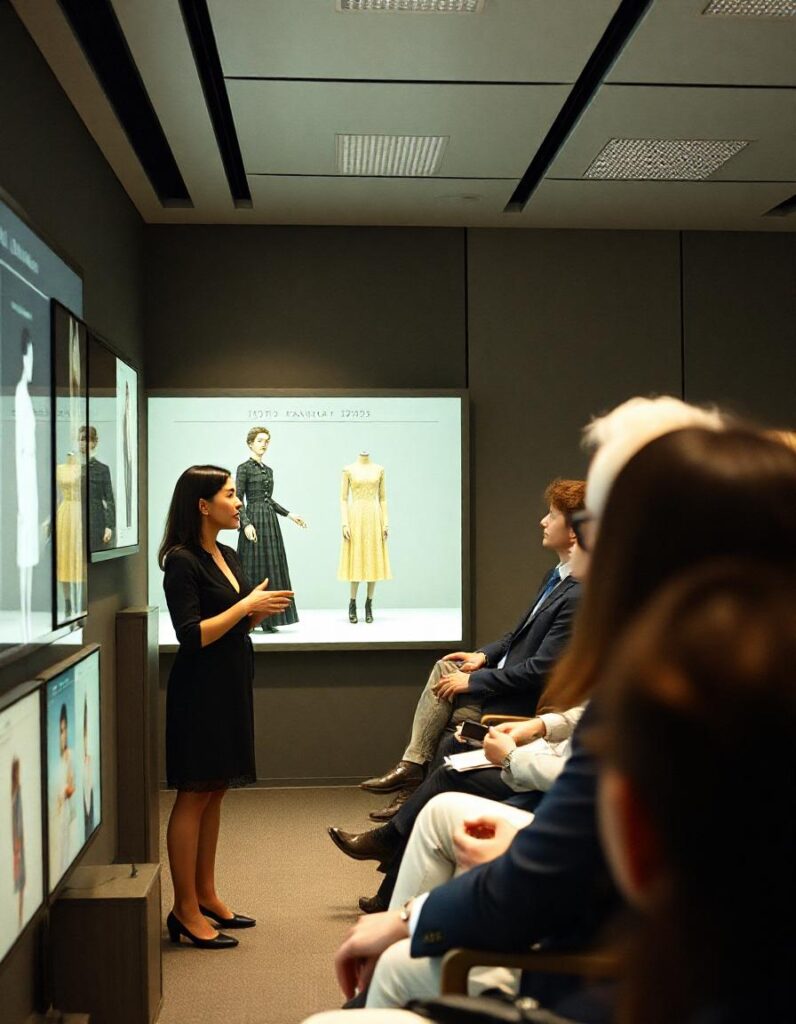Fashion Is An Ever-Evolving Industry, Constantly Shaped By New Trends, Technologies, And Cultural Shifts. However, For Modern Designers Looking To Make Their Mark, Understanding Fashion History Is Not Just Beneficial—It’s Essential. The Rich Tapestry Of Fashion’s Past Offers Valuable Lessons, Inspiration, And Context That Can Inform And Enhance The Work Of Today’s Designers. Here’s Why Understanding Fashion History Is So Important For Those Creating The Future Of Fashion.
1. Inspiration From The Past
Fashion History Is A Treasure Trove Of Inspiration. By Studying The Styles, Techniques, And Innovations Of Past Eras, Designers Can Discover New Ideas And Approaches That They Might Not Have Considered. Historical Fashion Offers A Vast Array Of Silhouettes, Fabrics, Patterns, And Details That Can Be Reinterpreted And Modernized. For Example, A Designer Might Draw Inspiration From The Flapper Dresses Of The 1920s, The Bold Colors Of The 1980s, Or The Intricate Embroidery Of Victorian Fashion. This Connection To The Past Can Spark Creativity And Lead To Unique, Contemporary Designs That Still Carry The Essence Of Fashion’s Rich Heritage.
2. Avoiding Repetition
While Fashion Often Revisits And Revives Past Trends, Understanding Fashion History Helps Designers Avoid Unintentional Repetition. By Being Aware Of What Has Already Been Done, Designers Can Ensure That Their Work Is Original And Innovative Rather Than Simply Rehashing Old Ideas. Knowledge Of Fashion History Provides The Context Needed To Recognize Patterns And Cycles In Fashion, Allowing Designers To Put Their Own Spin On Classic Styles Or To Break Away From The Past Entirely. This Awareness Of History Enables Designers To Contribute Something New And Fresh To The Fashion Landscape.
3. Learning From Mistakes
Fashion History Is Also A Record Of The Industry’s Mistakes And Missteps. From Problematic Cultural Appropriations To Environmental Impacts And Labor Exploitation, The History Of Fashion Includes Lessons On What Not To Do. Modern Designers Who Are Aware Of These Issues Are Better Equipped To Avoid Repeating The Mistakes Of The Past. Understanding The Consequences Of Certain Fashion Practices Can Guide Designers In Making More Ethical, Sustainable, And Inclusive Choices In Their Work. By Learning From The Past, Designers Can Contribute To A More Responsible And Forward-Thinking Fashion Industry.
4. Contextualizing Trends
Fashion Trends Do Not Emerge In A Vacuum; They Are Often A Response To Social, Political, And Economic Forces. By Studying Fashion History, Designers Gain Insight Into How And Why Certain Trends Developed, And How They Reflected The Values And Concerns Of Their Time. This Understanding Of The Relationship Between Fashion And Society Allows Modern Designers To Create Work That Resonates With Contemporary Audiences. It Also Helps Designers Anticipate Future Trends And Understand The Potential Impact Of Their Designs. In This Way, Fashion History Provides A Framework For Navigating The Ever-Changing Landscape Of Style.
5. Building A Stronger Design Foundation
Just As Architects Study Historical Buildings To Understand The Principles Of Design And Construction, Fashion Designers Can Benefit From Studying Historical Garments. Understanding The Techniques, Craftsmanship, And Materials Used In The Past Builds A Stronger Foundation For Modern Design. For Example, Knowing How Corsets Were Constructed Or How Certain Fabrics Were Handwoven Can Inform A Designer’s Approach To Structure, Fit, And Fabrication. This Technical Knowledge Not Only Enhances A Designer’s Skill Set But Also Allows For Greater Innovation And Experimentation In Their Work.
6. Connecting With Cultural Heritage
Fashion Is Deeply Tied To Cultural Identity, And Understanding Fashion History Allows Designers To Connect With Their Own Cultural Heritage And That Of Others. This Connection Is Particularly Important In A Globalized World Where Designers Draw Inspiration From A Diverse Range Of Cultures. By Studying The Fashion History Of Different Regions And Communities, Designers Can Approach Cultural Elements With Respect And Sensitivity. This Awareness Prevents Cultural Appropriation And Encourages A More Thoughtful And Authentic Incorporation Of Cultural References In Design. It Also Enables Designers To Celebrate And Preserve Cultural Traditions Through Their Work.
7. Appreciating The Evolution Of Fashion
Fashion Is A Reflection Of Human History, And Understanding Its Evolution Over Time Provides Designers With A Deeper Appreciation For The Art And Craft Of Fashion. From The Handcrafted Garments Of Ancient Civilizations To The Mass-Produced Clothing Of The Industrial Revolution, Fashion History Tells The Story Of How Clothing Has Evolved To Meet The Needs And Desires Of People Throughout The Ages. This Appreciation For The Evolution Of Fashion Can Inspire Designers To Approach Their Work With A Sense Of Purpose And Reverence, Recognizing That They Are Contributing To An Ongoing Legacy.
8. Creating Timeless Designs
Fashion Trends Come And Go, But Some Designs Stand The Test Of Time. Understanding Fashion History Helps Designers Identify The Elements That Make A Garment Truly Timeless. By Studying Iconic Designs And The Factors That Contributed To Their Enduring Appeal, Modern Designers Can Create Work That Transcends Trends And Remains Relevant For Years To Come. This Ability To Design Timeless Pieces Is Highly Valued In The Fashion Industry, As It Speaks To A Designer’s Understanding Of What Makes Fashion Both Beautiful And Functional.
Conclusion
Understanding Fashion History Is Crucial For Modern Designers Who Want To Create Work That Is Not Only Innovative And Original But Also Informed And Respectful Of The Past. By Drawing Inspiration From Historical Styles, Learning From The Mistakes Of Previous Eras, And Appreciating The Evolution Of Fashion, Designers Can Build A Strong Foundation For Their Creative Practice. Whether It’s Avoiding Repetition, Connecting With Cultural Heritage, Or Creating Timeless Designs, The Lessons Of Fashion History Provide The Tools Needed To Navigate The Complex And Ever-Changing World Of Fashion. For Aspiring And Established Designers Alike, A Deep Understanding Of Fashion’s Past Is An Invaluable Asset In Shaping The Future Of The Industry.
